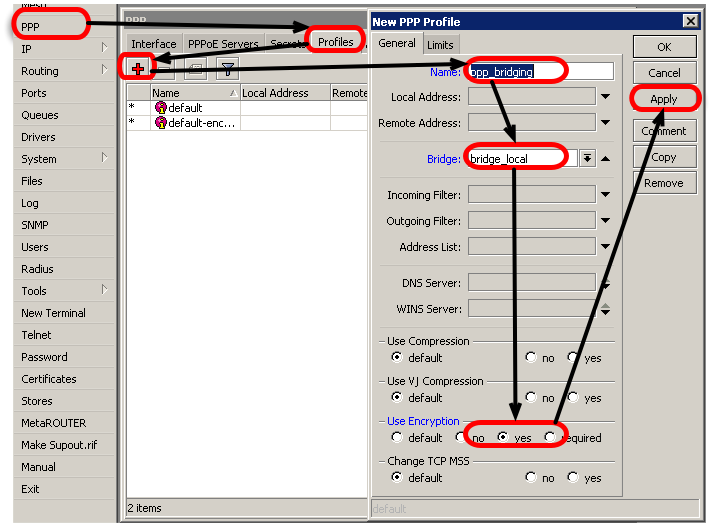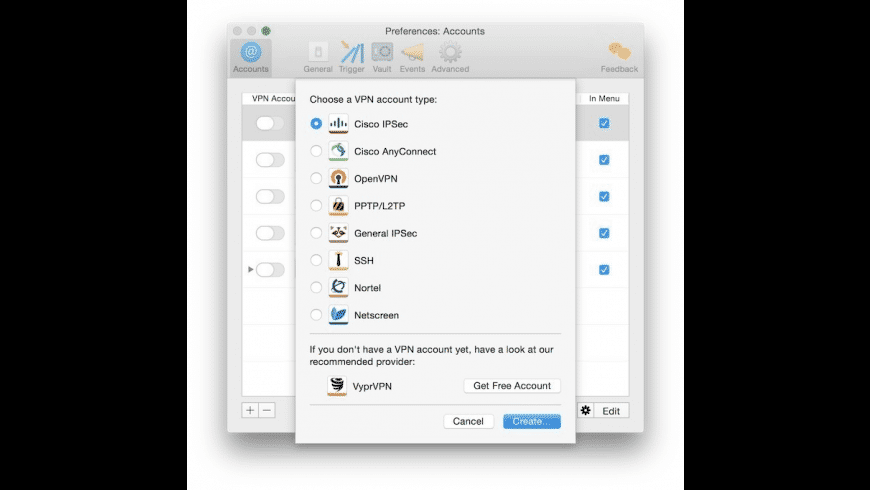VPN Protocols
- Pptp Client For Mac
- Mac Os Vpn Pptp Connect Free
- Pptp Vpn On Mac
- Pptp Vpn Mac Os
- Best Vpn Client For Mac
- Pptp Vpn For Mac Client Windows 10
Shimo is the first VPN client for Mac, which just works and which is very easy to use. Also, it is a savior, because it supports PPTP VPN on macOS Sierra, High Sierra and Mojave, in contrast to Apple’s built-in VPN client. Point-to-Point Tunneling Protocol Microsoft has long included PPTP VPN client software in Windows dial-up networking (DUN). PPTP is a tunneling protocol commonly used to authenticate users and encrypt traffic tunneled between Win32 PPTP clients and Windows NT/2000 PPTP servers.
There are no limitations regarding the use of VPN protocols.
Shimo supports every major VPN protocol that is currently available: The widely used CiscoVPN, the very secure OpenVPN and all standard-compliant IPSec connections. It also handles Point-to-Point Tunneling (PPTP VPN) and Layer 2 Tunneling (L2TP) protocols. Even Cisco’s new Secure Socket Layer (SSL) protocol AnyConnect is supported by Shimo – the most flexible VPN client for Mac. Shimo also enables you to establish encrypted Secure Shell (SSH) connections including port forwarding for secure web browsing.
There is no other VPN client for Mac which supports this variety of available protocols. If you want to have the all-in-one solution for your secure connections, Shimo is technology of choice. This feature is not only helpful, if you have to handle different types of connections, but rather in cases where your system administrator upgrades or changes the used protocol. With Shimo you are always prepared and ready to go.

Shimo does not support PPTP/L2TP on macOS Catalina due to Apple's enforced security requirements.
Objective
This document explains the procedure to use the MAC operating system's default VPN client to setup a PPTP connection over VPN Tunnel for a VPN Client Access. Suppose if there are two sites Site A and Site B. Both have a VPN Tunnel established between them. Both use the same RV220W device. A client user credential with username and password is set on Site B. Then the document explains the procedure to access Site B from Site A over the Tunnel in the MAC OS environment.
Applicable Devices
• RV220W
• RV120W
VPN Connection Setup
VPN User Set at Remote Site
A VPN user for PPTP is already set up on the Remote Site. The username being test123 and password being test123123.
VPN Connection Creation
Step 1. Click the + sign to create a new connection.
Step 2. Choose VPN from the Interface drop-down list as the desired connection to be set is VPN.
Step 3. Choose PPTP from the VPN Type drop-down list; as PPTP is the type of VPN connection to be set.
Pptp Client For Mac
Step 4. Enter any name for the connection in the Service Name field. In the example the name Test is entered.

Step 5. Click Create to create the VPN connection.
Mac Os Vpn Pptp Connect Free

Configuration of the VPN Connection
Step 1. Click the connection Test created from the connections displayed to configure the settings.
Step 2. The Configuration drop-down list gives information about any previous configuration settings saved for any connection. If it is required to save the configuration settings of the connection, then choose Add Configuration option from the Configuration drop-down list. In this case it is not required to save the configuration settings and therefore the Default option is chosen.
Step 3. Enter the IP Address of the server in the Server Address field. The Server Address is the Remote Local Area Network IP Address of the device on end point of the tunnel. Here in this case the Local Local Area Network IP Address is 192.168.10.1 and Remote Local Area Network Address is 192.168.1.1.
Pptp Vpn On Mac
Step 4. Enter the appropriate account user name in the Account Name field. Here the Account Name is the username (test123).
Step 5. Click Authentication Settings. A dialog box that allows the user to enter a password appears.
Step 6. Click the Password radio button as the user authentication method is set as password. Then enter the password in the corresponding field. In this example, the password is test123123. This password is for the account user.
• RSA SecurID — There is a portable device sometimes given to the users which generates a numeric value. If the authentication mechanism is set by the server is through this numeric value then this option is used.
• Certificate — The server sometimes issues authentication certificates to the user. If the user has downloaded certificate present then those can be uploaded for authentication. Click the Select button to choose the appropriate certificate downloaded.
• Kerberos — Kerberos is a security protocol used for user authentication. The user sends the Account User Name entered to the server. The server authenticates the user and sends the user a session key and a Ticket which basically has information about the user's ID, user's Network Address and session validity period.
• CryptoCard — The CryptoCard method will inform the user a password from the server each time the user logs into the server.
Step 7. Click Ok.
Step 8. To make sure all the traffic is being sent through VPN, Click the Advanced.
Pptp Vpn Mac Os
Step 9. Check the Send all traffic over VPN check box. This will enable all the packets to go through the VPN connection.

Step 10. Click Ok.
Best Vpn Client For Mac
Step 11. Click Apply button to apply the configurations made to the connection.
Pptp Vpn For Mac Client Windows 10
Step 12. Click Connect to connect.